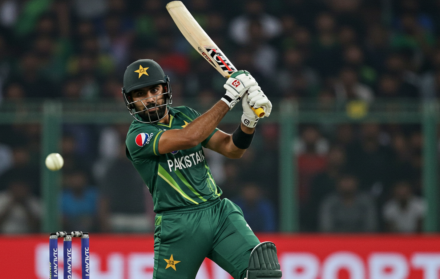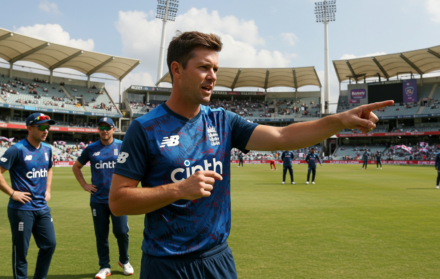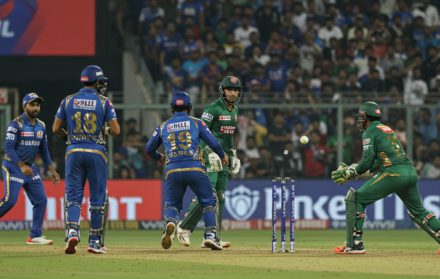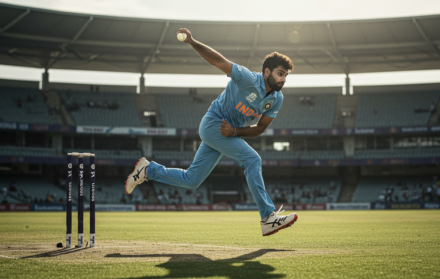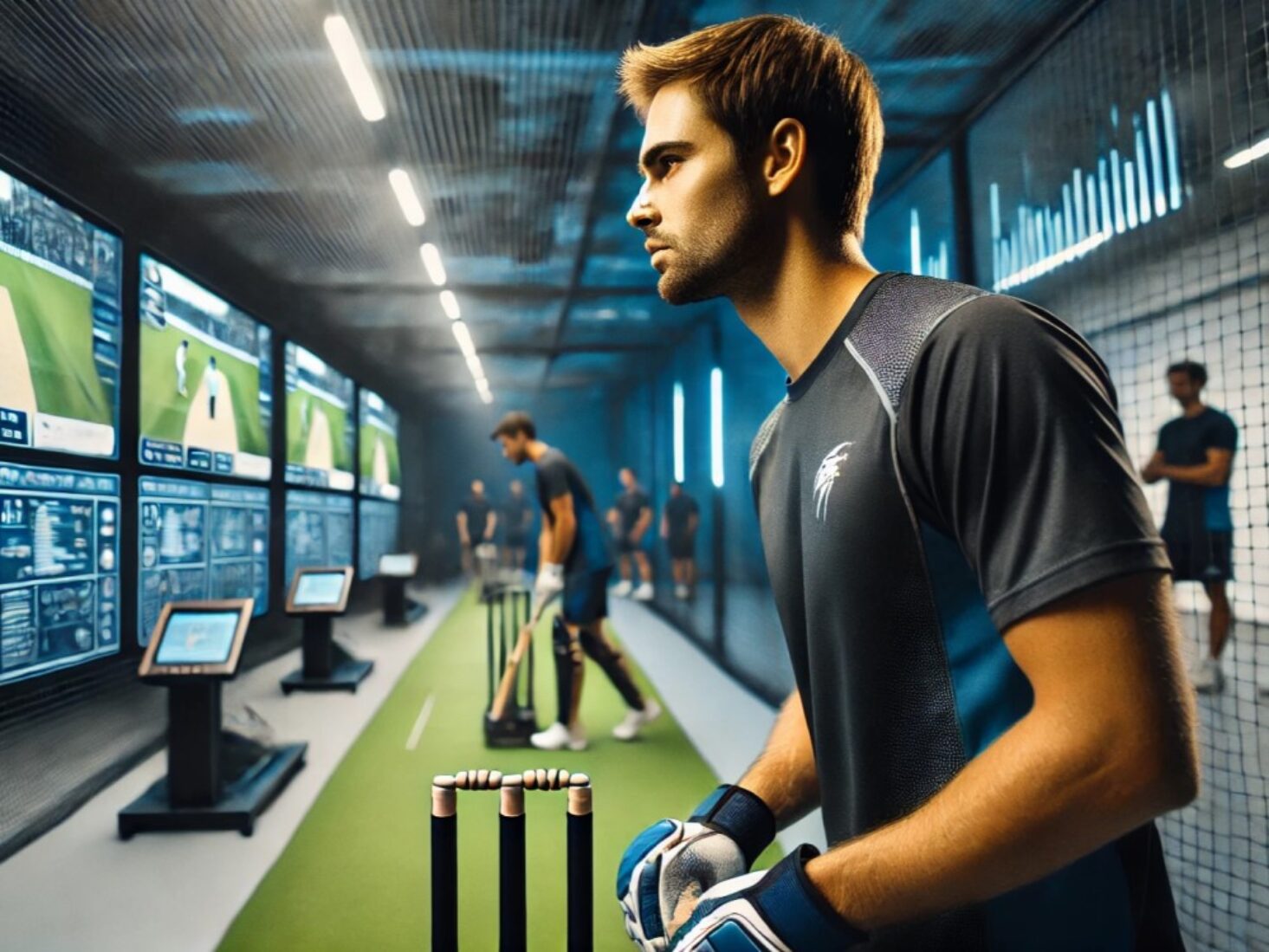
The Evolution of Cricket Training Methods
The evolution of cricket training methods has significantly shaped the way players prepare and perform on the field. From traditional drills to modern techniques, the transformation in training regimens reflects the sport’s dynamic nature.
Understanding how cricketers train and prepare for matches can provide valuable insights into the comprehensive approach that characterizes contemporary cricket training.
Cricket training has come a long way from its early days of basic exercises and informal practice sessions. Today, cricketers use specialized fitness equipment for training to enhance their physical conditioning, agility, and endurance. This equipment helps players maintain peak performance levels, crucial for the demanding nature of the sport.
The advancement in training gear is complemented by the availability of the best cricket training equipment, which includes high-tech tools and devices designed to improve specific skills. These innovations have revolutionized how players practice, making training sessions more efficient and effective.
Cricket academies and training programs play a pivotal role in the development of young talent. The role of academies and training programs cannot be overstated, as they provide structured training environments, access to expert coaching, and opportunities to compete at various levels. These programs are instrumental in nurturing future stars of the game.
Focusing on skill development, cricket training incorporates a variety of drills tailored to enhance different aspects of a player’s game. The skills and drills for young players are designed to build a strong foundation in batting, bowling, and fielding, ensuring that aspiring cricketers acquire the essential techniques required for success.
Mental preparation is another crucial component of modern cricket training. Understanding the mental aspects of cricket helps players develop the focus, resilience, and strategic thinking needed to excel under pressure. Psychological training complements physical drills, fostering a well-rounded approach to player development.
To continually sharpen their skills, cricketers engage in a range of targeted drills. These drills are designed to refine specific abilities, from batting techniques to fielding precision, ensuring that players are well-prepared for the challenges of competitive cricket.
The evolution of cricket training methods highlights the sport’s progression and the increasing emphasis on comprehensive player development. By integrating advanced equipment, structured programs, skill-specific drills, and mental training, cricket has established a robust training framework that continues to produce world-class players.
Embracing these methods ensures that the game remains dynamic and competitive, reflecting the continuous pursuit of excellence in cricket.
Early Cricket Training Methods
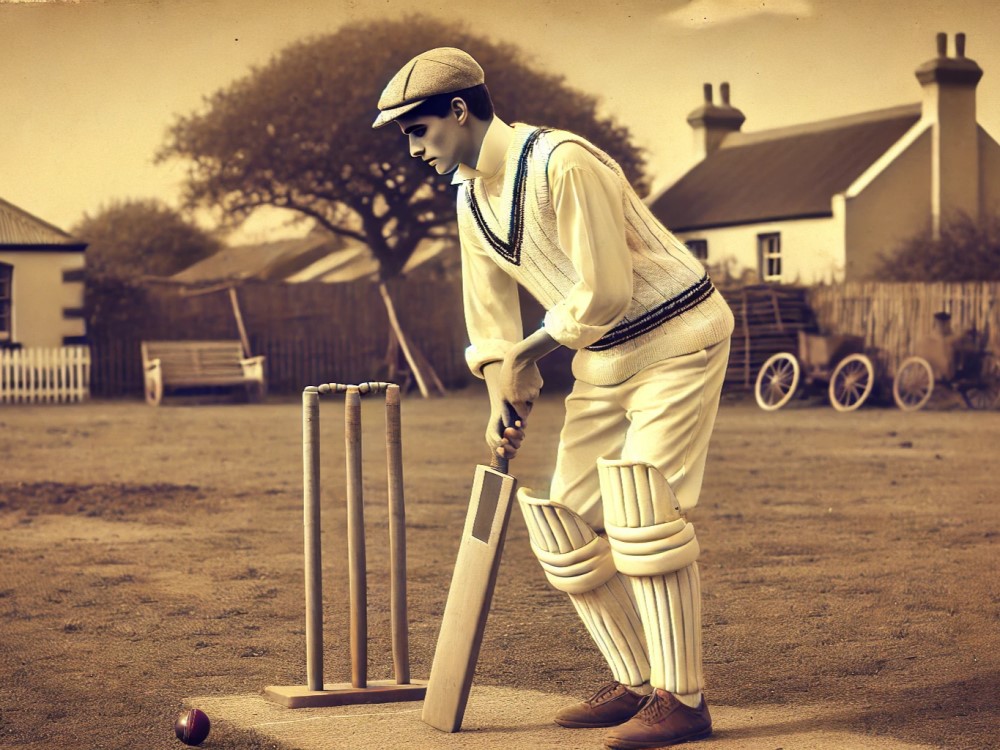
In the early days of cricket, training methods were relatively simple and unstructured. During the 19th century, cricket was primarily a gentleman’s game, and formal training was often limited to basic practice sessions. Players relied on natural talent and experience gained from playing matches rather than structured coaching.
Training sessions typically involved basic drills such as bowling and batting practice. Bowlers focused on accuracy and consistency, while batsmen worked on honing their technique against different types of deliveries. Fielding practice was also rudimentary, with players engaging in catching and throwing drills to improve their agility and reflexes.
Physical fitness was not a primary focus in early cricket training. Players often relied on their general fitness levels and stamina, which were developed through regular play rather than specific fitness regimes. There was little emphasis on strength training, conditioning, or injury prevention.
Coaching, if available, was often informal and provided by senior players or enthusiastic amateurs. Formal coaching structures and specialized training programs were virtually non-existent. The lack of scientific understanding of sports training and the absence of professional coaching staff meant that players had to rely largely on their intuition and personal experience.
Despite the limitations of early training methods, cricket continued to grow in popularity. Matches were often long and physically demanding, requiring players to develop endurance and resilience. The simplicity of early training practices reflected the slower pace of the game and the less competitive nature of cricket during this period.
The Emergence of Structured Coaching
The early 20th century saw the emergence of more structured coaching and training methods in cricket. This period marked the beginning of formal coaching roles and the introduction of organized training sessions, reflecting the growing professionalism of the sport.
One of the significant developments during this time was the establishment of cricket academies and coaching institutions. These institutions provided systematic training programs for young cricketers, focusing on technical skills, tactical knowledge, and physical fitness. The Marylebone Cricket Club (MCC) in England, for instance, played a crucial role in promoting structured coaching and setting standards for cricket training.
Coaches began to take a more scientific approach to training, incorporating elements of physical fitness, nutrition, and mental conditioning. Players were encouraged to follow specific fitness regimes to improve their strength, agility, and endurance. Running, weightlifting, and flexibility exercises became integral parts of training routines.
Technical skills training also became more specialized. Bowlers received coaching on various bowling techniques, such as swing, seam, and spin, while batsmen worked on developing a wide range of shots and defensive techniques. Fielding drills became more advanced, with an emphasis on catching, throwing, and ground fielding.
The role of the coach evolved from being a mentor to a more professional figure, often with experience and expertise in the sport. Coaches started to analyze players’ performances and provide personalized feedback, helping them to refine their skills and address weaknesses. This period also saw the introduction of match analysis, where coaches and players reviewed match footage to identify areas for improvement.
The increased focus on structured coaching led to higher standards of play and more competitive matches. Players benefited from the comprehensive training programs, which helped them to develop a deeper understanding of the game and enhance their overall performance. The professionalization of coaching laid the foundation for the advanced training methods that would emerge in the later decades.
The Influence of Fitness and Nutrition

As cricket evolved into a more physically demanding sport, the importance of fitness and nutrition in training methods became increasingly evident. The late 20th century and early 21st century saw a significant shift in how cricket players approached their physical conditioning and dietary habits, reflecting the growing understanding of sports science.
Fitness training became a cornerstone of cricket training programs. Players were expected to maintain high levels of physical fitness to cope with the rigors of modern cricket, which included faster-paced matches, shorter formats, and more frequent games. Strength and conditioning coaches were introduced to cricket teams, bringing expertise in developing fitness programs tailored to the needs of cricketers.
Strength training, once a peripheral aspect of cricket training, gained prominence. Players engaged in weightlifting and resistance exercises to build muscle strength and power, essential for both batting and bowling. Fast bowlers, in particular, benefited from strength training, which helped them to generate more speed and reduce the risk of injuries.
Cardiovascular fitness also became a focus area. Players participated in aerobic exercises such as running, cycling, and swimming to improve their stamina and endurance. This was crucial for maintaining performance levels over long periods, especially in Test cricket, where matches can last up to five days.
Flexibility and agility training were incorporated to enhance players’ movement and prevent injuries. Stretching routines, yoga, and pilates became popular among cricketers to improve flexibility and reduce muscle stiffness. Agility drills helped players to move quickly and efficiently on the field, enhancing their fielding capabilities and running between the wickets.
Nutrition played a vital role in supporting the physical demands of cricket. Dietitians and nutritionists were employed to provide players with personalized dietary plans. Emphasis was placed on balanced diets rich in proteins, carbohydrates, and healthy fats to fuel performance and aid recovery. Hydration strategies were also developed to ensure players remained hydrated, particularly during intense matches in hot conditions.
The integration of fitness and nutrition into cricket training methods led to significant improvements in players’ physical capabilities and overall performance. It also contributed to the longevity of players’ careers, as better fitness and nutrition helped to prevent injuries and enhance recovery.
Technological Advancements in Training
The advent of technology has revolutionized cricket training methods in recent years. Technological advancements have provided coaches and players with new tools and techniques to enhance performance, analyze skills, and improve training efficiency.
Video analysis is one of the most impactful technological innovations in cricket training. High-definition cameras and specialized software allow coaches to record, review, and analyze players’ performances in great detail. By studying video footage, coaches can identify technical flaws, evaluate strategies, and provide precise feedback. Players can also review their own performances to understand their strengths and weaknesses better.
Hawk-Eye technology, initially developed for tracking ball trajectories in tennis, has been adapted for cricket. It provides detailed data on ball movement, including speed, spin, and bounce. This information is invaluable for both bowlers and batsmen to fine-tune their techniques and develop strategies against opponents.
Biomechanics has become an integral part of cricket training. Motion capture systems and wearable sensors track players’ movements and analyze their biomechanics. This helps in understanding the physical stresses on the body, optimizing techniques to enhance performance, and reducing the risk of injuries. Fast bowlers, for example, can use biomechanical analysis to improve their bowling actions and prevent shoulder and back injuries.
Virtual reality (VR) and augmented reality (AR) are emerging technologies that are starting to make their mark in cricket training. VR simulators create realistic match scenarios, allowing players to practice in a controlled environment. Batsmen can face virtual bowlers, while bowlers can practice bowling to virtual batsmen. AR can overlay information onto the real world, such as highlighting fielding positions or showing the ideal line and length for bowlers.
Data analytics has transformed how cricket teams approach strategy and training. Teams collect and analyze vast amounts of data on player performances, match conditions, and opposition tactics. This data-driven approach helps in making informed decisions, developing game plans, and tailoring training sessions to address specific needs.
These technological advancements have significantly enhanced the precision and effectiveness of cricket training. They provide detailed insights that were previously unavailable, allowing players and coaches to make data-driven decisions and optimize performance. The integration of technology into training methods represents a significant leap forward in the evolution of cricket.
Mental Conditioning and Sports Psychology

The importance of mental conditioning and sports psychology in cricket training has gained recognition in recent years. As the sport has become more competitive and high-pressure, the need to address the psychological aspects of performance has become evident.
Sports psychologists work with players to develop mental toughness, concentration, and resilience. These professionals help players to manage stress, handle pressure situations, and maintain focus during matches. Techniques such as visualization, goal setting, and mindfulness are commonly used to enhance mental conditioning.
Visualization involves players mentally rehearsing their performance, imagining themselves executing skills successfully. This technique helps in building confidence and improving focus. For example, a batsman might visualize playing a perfect cover drive or a bowler might visualize delivering a perfect yorker.
Goal setting is another key aspect of mental conditioning. Players set specific, measurable, achievable, relevant, and time-bound (SMART) goals for their training and performance. This helps in maintaining motivation and providing a clear direction for improvement. Achieving these goals also boosts players’ confidence and self-belief.
Mindfulness and relaxation techniques are used to help players stay calm and focused. These practices involve breathing exercises, meditation, and progressive muscle relaxation. They help players to manage anxiety, stay present in the moment, and maintain composure under pressure.
Sports psychologists also help players to develop coping strategies for dealing with setbacks and failures. Cricket, like any sport, involves highs and lows, and the ability to bounce back from disappointments is crucial. Techniques such as positive self-talk and reframing negative thoughts are used to build resilience.
Team dynamics and communication are other areas addressed by sports psychology. Effective communication and strong team cohesion are essential for success. Sports psychologists work with teams to enhance interpersonal relationships, improve communication, and build a positive team culture.
The integration of mental conditioning and sports psychology into cricket training has significantly improved players’ mental well-being and performance. It has helped players to develop a winning mindset, handle pressure situations, and maintain consistency. This holistic approach to training recognizes the importance of mental strength alongside physical and technical skills.
Modern Cricket Academies and Training Facilities
Modern cricket academies and training facilities play a crucial role in developing the next generation of cricketers. These academies provide comprehensive training programs that encompass all aspects of the game, from technical skills and physical fitness to mental conditioning and strategic understanding.
State-of-the-art facilities are a hallmark of modern cricket academies. These facilities include indoor and outdoor practice nets, gymnasiums, swimming pools, and rehabilitation centers. Advanced equipment, such as bowling machines, video analysis tools, and fitness monitoring devices, are also integral parts of these academies.
Coaching staff at modern cricket academies are highly qualified and experienced. They include specialized coaches for batting, bowling, and fielding, as well as fitness trainers, physiotherapists, and sports psychologists. This multidisciplinary approach ensures that players receive well-rounded training and support.
Talent identification and development are key focuses of cricket academies. Young players with potential are scouted and nurtured through age-group programs. These programs provide structured training, competitive match opportunities, and pathways to professional cricket. Academies often collaborate with schools, clubs, and national cricket boards to create a seamless development pathway.
Cricket academies also emphasize the importance of education and personal development. Many academies offer educational programs that allow young players to balance their academic studies with their cricket training. This holistic approach ensures that players are well-prepared for life both on and off the field.
International exposure is another significant aspect of modern cricket academies. Players often participate in overseas tours and training camps, gaining valuable experience and exposure to different playing conditions. This helps in broadening their cricketing horizons and developing adaptability.
The role of modern cricket academies extends beyond player development. They contribute to the overall growth of the sport by promoting cricket at the grassroots level, engaging with communities, and fostering a love for the game. Academies often organize coaching clinics, talent camps, and community events, creating a positive impact on the sport’s ecosystem.
The comprehensive training programs and advanced facilities provided by modern cricket academies have significantly enhanced the quality of players emerging from these institutions. They have produced world-class cricketers who excel in all formats of the game, contributing to the global success and popularity of cricket.
The Evolution of Cricket Training: From Tradition to Modern Innovation

The evolution of cricket training methods has been a journey of continuous improvement and innovation. From the rudimentary practices of the 19th century to the advanced techniques and technology of today, cricket training has transformed to meet the demands of modern play.
In the early days, cricket training was primarily informal and unstructured. Players relied on basic drills and personal experience to hone their skills. As the sport grew in popularity, the need for more structured and effective training methods became evident.
The integration of structured coaching marked a significant turning point in cricket training. Professional coaches introduced systematic approaches to skill development, focusing on technique, strategy, and game awareness. This shift helped players refine their abilities and better understand the complexities of the sport.
Fitness and nutrition have also become critical components of cricket training. Modern players follow rigorous fitness regimes and tailored nutrition plans to ensure peak physical performance. Emphasizing strength, endurance, and agility, these programs help players maintain optimal condition throughout the demanding cricket seasons.
Technological advancements have revolutionized cricket training in recent years. Tools such as video analysis, wearable technology, and simulation software provide detailed insights into players’ performances. These technologies allow coaches and players to analyze every aspect of their game, from batting and bowling techniques to fielding positions and reaction times. The data-driven approach facilitates targeted improvements and strategic planning.
Mental conditioning has emerged as another vital aspect of modern cricket training. Recognizing the importance of mental toughness and resilience, coaches incorporate psychological training to help players handle pressure, stay focused, and maintain confidence. Techniques such as visualization, mindfulness, and stress management are now standard practices in cricket training programs.
State-of-the-art training facilities further enhance the quality of cricket training. Equipped with advanced equipment and amenities, these facilities provide an ideal environment for players to practice and develop their skills. Indoor nets, bowling machines, and fitness centers are just a few examples of the resources available to modern cricketers.
As cricket continues to evolve, training methods will undoubtedly continue to advance, further shaping the future of this beloved sport. The ongoing commitment to innovation and improvement ensures that players can reach their full potential, keeping cricket at the forefront of competitive sports.
The transformation of cricket training reflects the sport’s dynamic nature and its ability to adapt to new challenges. By embracing these developments, cricket continues to captivate audiences and inspire future generations of players.

